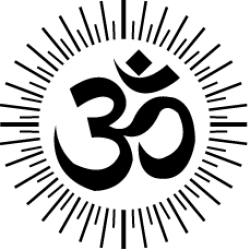
Last week I went to a Jivamukti yoga class at Indaba yoga studio in Marylebone. I went with an old Sivananda buddy and my, how far we’ve strayed from our roots.
Before now I’ve told people I practice Ashtanga and they’ve told me I’m hardcore/mad/nuts etc. But I guess I just like a class that enables me to move and stay with my breath.
Perhaps it’s because I’m unfamiliar with the sequencing in Jivamukti but I was all over the place. It was so fast. I’m told it was a particularly challenging class but it just felt repetitive. So many chaturanghas followed by lunges or warriors… I couldn’t keep up, I kept losing my breath and child’s pose was a-calling.
I enjoyed the chanting of what I knew as the Sivananda meal prayer and the teacher busted out the harmonium which was fab.
And indeed, the Jivamukti London website describes the style as thus:
Jivamukti Yoga is a method of yoga that was created by David Life and Sharon Gannon in1984, which reintegrates the physical, philosophical and spiritual aspects of Yoga. The emphasis in the west has been on Yoga as mostly a physical practice. More and more people are achieving firmer bodies through regular yoga classes.
But many are finding something more: what starts out as a purely physical practice creeps into the hearts and minds of even the least spiritual practitioners.
David and Sharon became teachers because they were passionate about communicating Yoga as more than just a system of exercises, but also as a spiritual practice; a path to enlightenment. From their earliest classes, they have taught a living translation of the Indian system of yoga in a way that western minds can comprehend. That is why Jivamukti Yoga emphasizes vigorous asana as its primary technique, but other practices such as meditation, devotional chanting and study of the ancient texts play an important role as well.
I like trying new classes and styles of yoga but when I lose my breath, it simply becomes an exercise class.
Has anyone else tried Jivamukti? I’m reluctant to judge an entire style based on one class and I’m keen to hear other’s thoughts.


Hi Clare
I have to say I agree with you, I tried Jivamukti a couple of times.
It’s a fun class, physically challenging but also felt like a very Americanised pseudo spiritual practice…but then I love Ashtanga and im very very biased!
Hi there I am sorry but I love Jiva. As a traditional Ashtanga mysore student I find jiva gives me something different. I don’t find it too fast – my teacher in south London is brilliant and I particularly enjoy the philosophy spoken with great passion and her unexpected and varied sequencing of classes which are always put together. I feel the class is very similar to many vinyasa flow classes but with jivas sequencing is slightly specific . All vinyasa has a lot of ufd , warriors etc. that’s my understanding. Perhaps try a different teacher? .. Like any class it’s not always just the style but it’s also about the person delivering the message and if they connect with you. Tanya yoga teacher – south London
Hi Clare,
I’ve attended several Jivamukti classes as it was all the rage for awhile here in the United States, and I can agree with your assessment. Did you know that David and Sharon went through the Sivananda TTC when they were starting. Strayed from the lineage a bit, eh?
Every one did the Sivananda YTT, it was quick, cheap, and not too rigorous. Very few of them had any intention of teaching anything like Sivananda yoga afterwards. 🙂
Following on from fbook and specific to this blog post …
I remember Rusty Wells saying that he complained to Sharon Gannon that she wanted him to breath “too fast” and she replied “your body can adapt” 🙂 I started doing Jiva when I was finishing my Astanga phase and found it refreshing to breath a bit quicker, it taught me a few things about how I (and every other Astangi I’d practiced near) were forcing the breath to meet the magical 5/6 ujai breaths a minute so lauded at the time. It was also the time when the fad was for Astanga practice to involve vinyasa between each side and a vinyasa to standing between all poses so I found the relatively few chatturanga poses at Jiva refreshing.
The other benefit of Jiva was the variety. The Astanga series were not designed to do my body any good at all, they encouraged me to work with the muscles I’d already over developed and to ignore the ones I already ignored too much. Sure, it’s possible to try and correct things like that within the series but it’s going against the flow to do so. Jiva change their sequence every month and keep it varied so there’s more chances that working on what your body needs will be working with the flow of the class.
In the end the centre got too popular and too crowded, the centre kept hiring cheaper new graduates rather than experienced teachers, I got tired of the teachers having very weak asana practices themselves, and too much of the “philosophy” was complete nonsense. I found even more varied classes with better teachers elsewhere and moved on.